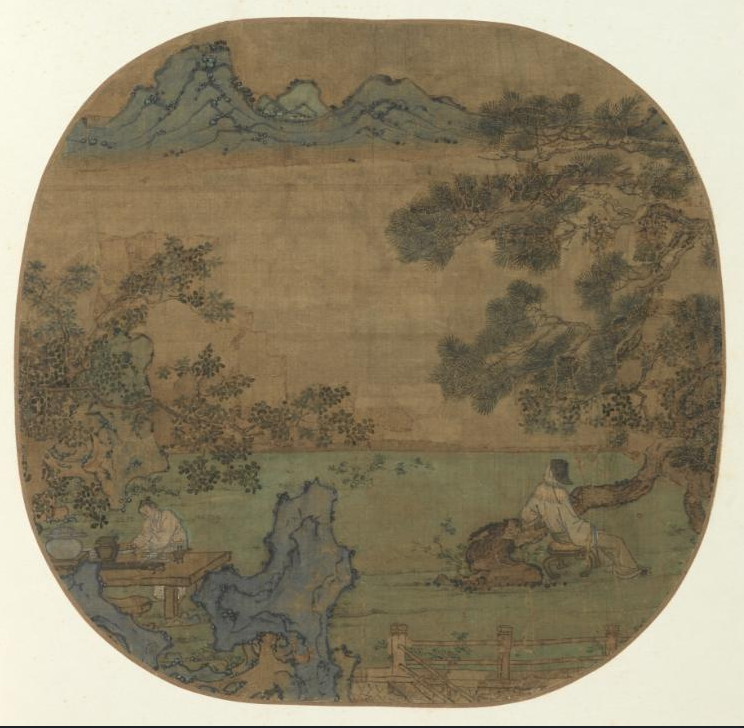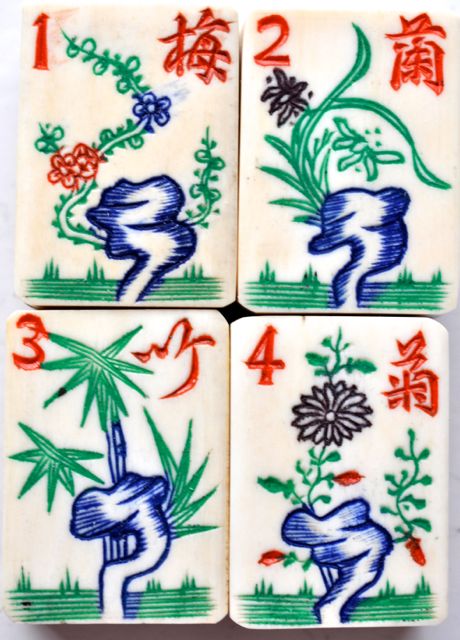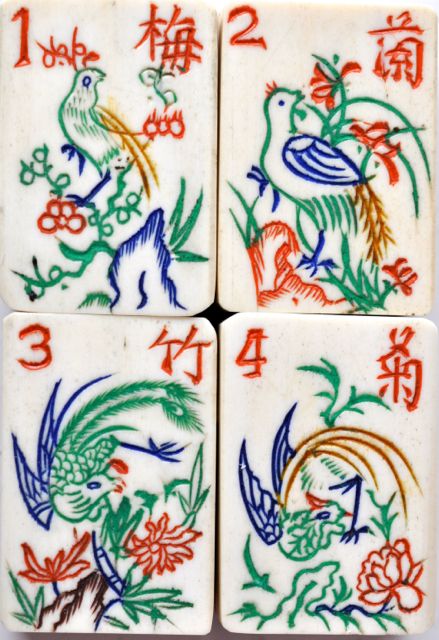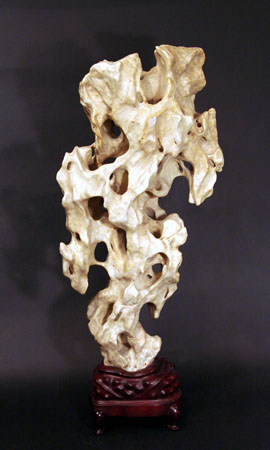This lovely work dating from the Song Dynasty is in the collection of the Cleveland Art Institute. We see two figures surrounded by trees, with mountains in the background. In the foreground, we have a huge rock. As mentioned before, the Chinese have a great appreciation for the natural beauty of rocks. According to Patricia Bjaaland Welch,
"interesting rocks ("strange stones" known as guaishi) were collected as early as the Tang Dynasty (618-906), a practice that was firmly established by the Song (960-1279)..."
The most valued rocks and stones were those that resembled sacred mountains or which were believed to embody inner energy. Many of the larger rocks or stones found in Chinese paintings, gardens, still lifes and floral arrangements are "longevity stones" but not all."
Certainly, in the work above, the rock would have leant itself to contemplation.
Many of you have noticed how difficult it can be to identify images on mahjong tiles, and it is very easy to make mistakes differentiating stones from lingzhi.
We saw these tiles the other day. The lingzhi has a rounded organic look to it, and, in this case, is shown with its stalk.
These birds are seen with rocks. Rocks in Mahjong often have a bit of an angular look to them. At other times they have holes going from one side to the other, such as the one below.
As you can see, this Mahjong rock has a porous quality to it, similar to the real one in the photograph just below this. The red Chinese character on this tile translates as "mountain." It is a character you will often see on Flower tiles.
This rock, from the Ralph M. Chait Gallery, is of the Taihu variety, limestone found at the foot of Dongting Mountain near Taihu Lake. The continuous movement of the water produces this porous effect. You can see how similar it is to the one on the Mahjong tile.





